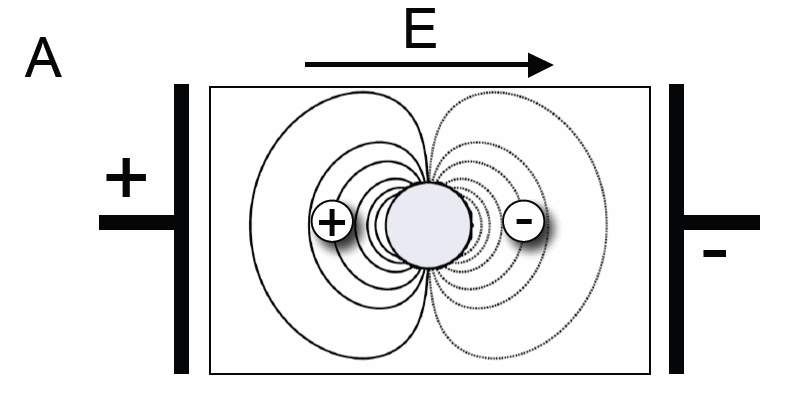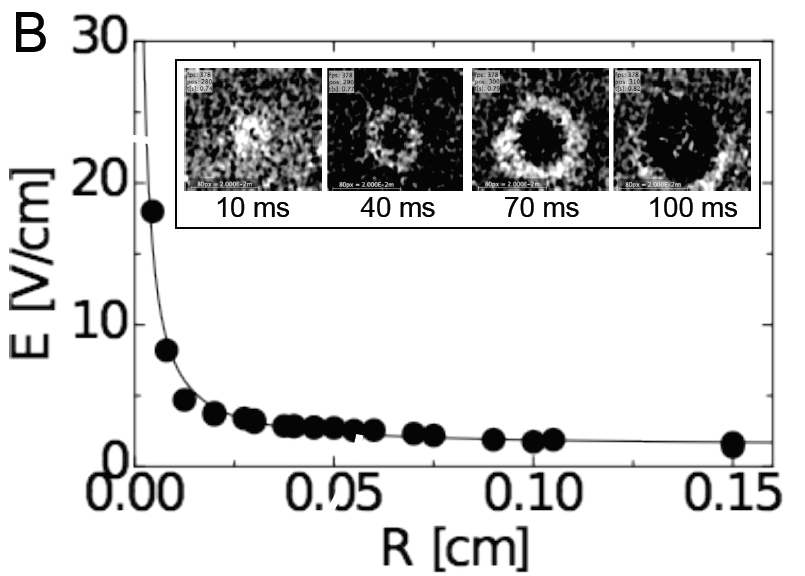Cell Culture Experiments
The mechanism underlying the recruitment of wave emission from heterogeneities in electrical conductance is shown in Fig. 1A. In the presence of an electric field, the membrane potential in the vicinity of a heterogeneity is decreased and increased, i.e. depolarized and hyperpolarized. If the membrane potential is increased above excitation threshold in a region sufficiently large, an excitation wave is created. This mechanism can be studied experimentally in cardiac cell cultures, as shown in Fig. 1B, which permit a direct comparison with theory. Using artificial heterogeneities of well-defined size, we measured the characteristic dependence of the electric field strength required to initiate an excitation wave from the radius of the heterogeneity and find good agreement with theory. In cardiac cell cultures, well-defined heterogeneities were created using photolithography. Experiments in cardiac cell cultures are underway to identify and characterize FF-AFP mechanisms in a simplified but wellcontrolled setting.
Figure 1

(A) Schematic of the mechanism underlying wave emission from heterogeneities in electrical conductance. In the presence of an electric field, the membrane potential in the vicinity of a heterogeneity (gray circle) will be decreased (hyperpolarized, gray lines) or increased (depolarized, black lines), with respect to the resting membrane potential. If tissue depolarization exceeds the excitation threshold in a sufficiently large region, an excitation wave will be emitted (panel B, inset).

(B) Dependence of electric field strength required to induce the emission of an excitation wave from a heterogeneity of radius R. Black circles indicate data from cell culture experiments. Inset shows an example of a wave emitted from an artificial heterogeneity due to a single electric field pulse (field of view 2 x 2 cm2). Times are given with respect to the onset of the pulse.